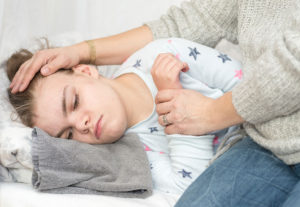Seizure Disorders in Children with Cerebral Palsy
Cerebral palsy is caused by damage to a child’s developing brain. This brain damage may also result in seizures in about 20-40 percent of cases, especially within the first 28 days of childbirth.
While seizures are somewhat common in children born with cerebral palsy, it’s important to note that there are different levels of severity. If your child is experiencing seizures or has been diagnosed with co-occurring epilepsy, understand that there may be treatment options available.
In many cases, children with CP may experience not only generalized seizures which affect the entire brain, but also focal seizures that affect only one side of the brain. In order to best protect the child, parents and caregivers need to learn the signs of an impending seizure, as well as what to do if and when they do experience an episode.

Seizures in Children with CP
Seizures and Brain Damage
Seizure disorders in children are almost always the result of abnormal nerve activity caused by a brain injury or malformation to the developing brain. In most cases, the brain injury occurs during labor and delivery as the result of asphyxiation (oxygen deprivation), excessive medication, or an injury that results from the use of birth-assisting tools.
The type of seizure that occurs will be contingent upon where exactly the brain injury is focalized. The risk of seizures is enhanced greatly if the baby suffers a neonatal stroke. Sometimes it can be difficult to detect some types of seizures during infancy, so parents need to work with their child’s physician in order to identify the telltale signs.
Treatment Options
There is no single treatment for seizure disorders, but some medications and diet plans can help reduce their frequency as well as control the severity. The most common treatment for children with cerebral palsy is anticonvulsant medications such as Dilantin, Depakene, Klonopin and Tegrotol.
If medications and diet changes prove ineffective, surgery may be a last resort. While surgery is usually only considered after other treatments fail, you should always consult with your child’s doctor regarding their treatment plan. There are different types of surgical procedures available, including:
- Focal Resection — Where a portion of the brain is removed and subdural electrodes are implanted.
- Hemispherectomy — Which involves removal of most of an entire side of the brain.
- Corpus Callosotomy — Which involves severing the corpus callosum in the brain to reduce generalized seizures.
What To Do If Your Child Has a Seizure
- Don’t panic. Stay calm and keep bystanders at a distance.
- Prevent further injury by placing the child on a soft surface if possible, and away from sources of danger such as sharp objects.
- Make note of the length of time the seizure lasts. If it lasts more than five minutes (or this is the child’s first seizure), call 911 as soon as possible.
- Do not attempt to remove food from their mouths (or put anything into your child’s mouth). They are at no risk of “swallowing their tongue.”
- Make your child comfortable by removing eyeglasses, rolling them on their side, and loosening tight clothing. After they come to, comfort and reassure your child.
- After the seizure subsides, consult with your child’s doctor. If you’re especially concerned, seek emergency medical attention.
